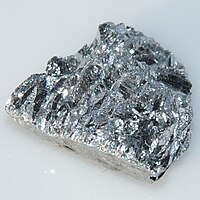
Photo from wikipedia
Aim of present study is to quantify essential (Ca, Co, Cr, Cu, Fe, K, Mg, Mn, Na, P, Se and Zn) and non-essential/toxic (Al, As, Ba, Cd, Ni, Pb and… Click to show full abstract
Aim of present study is to quantify essential (Ca, Co, Cr, Cu, Fe, K, Mg, Mn, Na, P, Se and Zn) and non-essential/toxic (Al, As, Ba, Cd, Ni, Pb and Ti) elements of 100% fruit juices (orange, apple, pomegranate and grape) and fruit nectars (orange, peach, apricot and cherry and the determination of non-carcinogenic and carcinogenic risks. For this purpose, inductively coupled plasma-optical emmision spectroscopy was used to find out element content of samples after microwave digestion process. Essential element contents of 100% fruit juices and nectars were determined as max. 1350 mg/L (K, in 100% orange juice) and min. 0.007 mg/L (Cr, in 100% grape, cherry and apricot nectar and Cu, Mo, in 100% apple juice). Furthermore, the daily intake percentages of essential elements were calculated for 200 mL fruit juice consumption. Target hazard quotients, hazard indexes (HI) and target carcinogenic risks (TR) of non-essential, trace and ultra trace elements were also calculated and risk analysis were conducted. According to the results, the HI and TR of samples were founded as less than 1 and 1 × 10 −4 , respectively. All samples evaluated as in the low risk group.
Journal Title: Journal of Food Science and Technology
Year Published: 2020
Link to full text (if available)
Share on Social Media: Sign Up to like & get
recommendations!